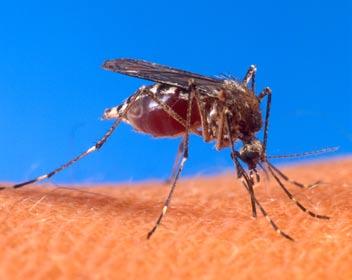
4 minute read
TIPStricks
How to Reduce Mosquito Breeding Sites
Mosquitoes spread some of the world’s deadliest and most-debilitating diseases, including Zika virus, West Nile virus, malaria, and dengue fever. Year after year, mosquitoes are such a serious health threat that they have an official week devoted to their extermination. The American Mosquito Control Association (AMCA) has declared June 20 through June 26, 2021, as this year’s National Mosquito Control Awareness Week. The goal of Mosquito Control Awareness Week is to educate the public about the dangers of mosquitoes and the importance of mosquito control in the prevention of disease. According to mosquito expert Joe Conlon, technical advisor for AMCA, it is impossible to live in a completely mosquito-free environment. Wherever there is moisture, there will be mosquitoes. But you can reduce your chances of getting bitten by these insect pests by being “mosquito smart” and reducing places where they can breed. To reduce the chances of getting mosquito bites, keep as much of your skin covered as possible by wearing long sleeves and long pants. Wear lightcolored clothing because mosquitoes are attracted to darker colors. Using mosquito repellent is another good way to keep mosquitoes—and mosquito bites—at bay. Apply EPArecommended repellent directly to skin or clothing, following the instructions on the product label. It doesn’t take much standing water to create a mosquito breeding site. “Some species of mosquitoes can lay eggs in as little as a bottlecap full of water,” said Jonathan Cohen, mosquito control expert and president of Summit Responsible Solutions. “That’s why homeowners need to be vigilant in eliminating places where water can collect and stand in their yards and gardens.” To reduce mosquito breeding grounds, dispose of cans, plastic containers, old tires, and other items that can collect water. Turn over wheelbarrows and children’s wading pools. Clean clogged roof gutters, which can become prime mosquito-breeding spots. Periodically empty the saucers under plant pots to make sure they are not harboring mosquito larvae. To prevent mosquitoes from breeding where water collects, including ponds, bird baths, animal watering troughs, gutters, ditches, drainage pipes, and rain barrels, use a sustained-release mosquito control product such as Mosquito Dunks® that contains BTI to kill mosquito larvae. BTI (Bacillus thuringiensis israelensis) is a bacterium that kills mosquito larvae naturally before they can become diseasespreading adults. Even though BTI is deadly to mosquito larvae, it is harmless to people, pets, fish, wildlife, and beneficial insects. When a donut-shaped Mosquito Dunk is placed in standing water, the BTI will kill mosquito larvae for up to 30 days. The BTI is continually released as the Mosquito Dunk (https://amzn. to/3iWKqFm) breaks down naturally in the water. In places where small amounts of water collect, such as tree holes, potted plant saucers, water reservoirs in selfwatering planters, discarded tires, and even in water-collecting plants like bromeliads, a BTI product called Mosquito Bits® can kill mosquito larvae. Mosquito Bits provide a quick kill of mosquitoes because the BTI is released instantly. Mosquito Bits are perfect for use in swampy areas and areas of extremely dense populations of mosquito larvae. A quick-kill Mosquito Bits application can be immediately followed by the addition of Mosquito Dunks for effective long-term mosquito larvae control. By reducing exposure to mosquitoes, limiting breeding sites and using the most effective types of mosquito control products, you can greatly reduce your chances of being bitten by diseasecarrying mosquitoes. Visit www.summitresponsiblesolutions.com for more information. o

Crocosmia: A Fiery Family
Looking for a real sun-worshipper? If so, choose the Crocosmia! It seems as if it turns the heat and sunshine right into more and more flowers. This is one tough plant: it can really take it. Dry soil, little water, and lots of blazing sun? No problem! Its first flowers start opening in June, and the enjoyment can last for months. Your flower border can be blazing with color until late in October. Crocosmia is available in the warm colors of yellow, orange, and red. What could be better for a hot border? Some cultivars produce large flowers and others small ones; some are all one color and others sport two colors. They even come in a range of heights. Crocosmia ‘Lucifer’ is the most-popular cultivar in this fiery family. This blazing red-orange beauty creates a tremendous explosion of color when you plant it in a large cluster. Did you know that the flowers are followed by ornamental berries? It’s like getting two fantastic features from the same plant. You can cut the plant down to the ground in the fall, but this isn’t really necessary. Whatever you do, the new shoots will start emerging from their corms in the spring. Crocosmia makes a wonderful cut flower. Try cutting a few stems from its sea of flowers and putting them in a vase. Crocosmia varieties that are shorter and more-compact will be perfect for growing in pots or containers. More information about flower bulbs is available at www.bulb.com. o










